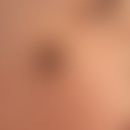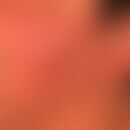Synonym(s)
HistoryThis section has been translated automatically.
Rudolph 1914; Lane 1915; Medlar 1915
DefinitionThis section has been translated automatically.
You might also be interested in
PathogenThis section has been translated automatically.
Roundish, yellow-brown fungal cells, which grow to 4-12 µm in size and reproduce by cleavage. Brown hyphae can occur in and on the epidermis. The currently recognized pathogens include 6 species with identical structures in the tissue as well as characteristic intrinsic colour. They are also called dematiacaea, dematiaceae or black fungus. These are the species listed below:
- Phialophora verrucosa jeanselmii or gougerotii
- Fonsecae pedrosoi
- fonsecae compacta
- Cladosporium (also Cladophialospora) carrionii
- botromyces caespitosus
- Rhinocladiella aquaspersa (so far only described in isolated cases).
Black fungus lives in the soil and in dead plant tissue. This fact explains the frequency of the disease in agricultural workers. Thus, the typical predilection sites are also the lower extremities.
Occurrence/EpidemiologyThis section has been translated automatically.
Described worldwide, mainly in tropical zones, e.g. in the south of the USA, South America, Russia and Japan; sporadically in Finland, Czech Republic, Slovakia, Germany. In Europe, infection may occur by crushing tropical boxwood.
EtiopathogenesisThis section has been translated automatically.
ManifestationThis section has been translated automatically.
Mainly rural population. Men are affected significantly more often than women. Preferably in the age group between 30-50 years. Less frequently in children and adolescents (Khan S et al. 2019).
LocalizationThis section has been translated automatically.
ClinicThis section has been translated automatically.
HistologyThis section has been translated automatically.
Tuberculoid granulation tissue, miliary abscesses, pseudoepitheliomatous epidermal hyperplasia. Fungi: Scleroting (fumagoid) bodies, Medlar bodies, copper-pennies, brownish, thick-walled cells, mycelium with lateral spore formation.
It is recommended to use the highly sensitive staining according to Gomori-Grocott or Fontana-Masson to detect the fungal elements.
DiagnosisThis section has been translated automatically.
Cultural (Sabouraud glucose agar or cycloheximide-containing media) or histological pathogen detection from biopsy specimen. Culture: Dark, olive brown, velvety culture, pigmented septated hyphae.
Differential diagnosisThis section has been translated automatically.
General therapyThis section has been translated automatically.
The disease is often (especially when infected with Fonsecaea pedrosoi) resistant to therapy and protracted. Different forms of therapy are described. Circumscribed skin foci in early stages of the disease should be removed generously by surgery.
Alternatively cryosurgery. Icing times and frequencies depending on the location and depth of the skin changes.
Alternatively, local heat therapy (permanent for a few weeks at 44-46 °C) is also described as successful.
In case of development of elephantiasis chromomycetica, manual and intermittent lymphatic drainage measures(see below lymphedema).
External therapyThis section has been translated automatically.
Internal therapyThis section has been translated automatically.
- Often the disease is too advanced for local therapy.
- Therapy of choice is itraconazole (e.g. Sempera Kps.): 200-400 mg/day over 6-20 months (success rate approx. 65%).
- Alternatively Terbinafine: 500 mg/day p.o. over 6-12 months.
- For therapy-resistant courses: Posaconazole (Noxafil) 2 times/day 400 mg (10 ml) p.o. (daily dose 800 mg) or 4 times/day 200 mg (5 ml) p.o. The duration of therapy depends on the severity of the underlying disease, recovery from immunosuppression and clinical response.
- Alternative: The former "classical therapy" consisted of Amphotericin B 0.1 mg/kg bw/day i.v. (slowly increasing to max. 1 mg/kg bw/day) in combination with 5-flucytosine (Ancotil) 150 mg/kg bw/day i.v. in 4 doses. The therapy is associated with considerable NW.
Operative therapieThis section has been translated automatically.
- Because of the uncertain drug therapy, surgical treatment of circumscribed nodular foci is recommended. Cryosurgery or caustic measures have been recommended for extensive vegetative lesions.
Progression/forecastThis section has been translated automatically.
Case report(s)This section has been translated automatically.
A 50-year-old farm worker from Nicaragua presented with a large, partly red, partly blackish discoloured, sharply defined, non-painful plaque on his right lower leg. The changes had existed for years and had not bothered him any further.
Findings: The skin lesions were extensive, keloidal solid, partly smooth, slightly scaly, reddish, partly circumscribed cauliflower-like verrucous, grey-blackish acuh crusty.
Histology: lymphocytic and epitheloid cell granulation tissue with miliary granulocytic abscesses, pseudoepitheliomatous epidermal hyperplasia. Detection of brownish, thick-walled spores, also mycelium with lateral spore formation.
Therapy: Itraconazole 200mg/day p.o. After 6 months slight flattening of the plaques. But still no final healing.
LiteratureThis section has been translated automatically.
- Artuz F (1997) Purple erythematous plaques on the face and left arm. Chromomycosis. Arch Dermatol 133: 1029, 1032
- Fernandez-Flores A et al (2014) Morphological findings of deep cutaneous fungal infections. At J Dermatopathol 36:531-553
- Khan S et al (2019) A Rare Case of Chromoblastomycosis in a 12-year-old boy. J Pak Med Assoc 69:1390-1393.
- Kimura M et al (2003) Multifocal subcutaneous phaeohyphomycosis caused by Phialophora verrucosa. Arch Catholic Lab Med 127: 91-93
- Lane CG (1915) A cutaneous disease caused by a new fungus, Phialophora verrucosa. J Cut Dis 33: 840-836
- Medlar EM (1915) A cutaneous infection caused by a new fungus, Phialophora verrucosa, with a study of the fungus J Med Res 32: 507-522
- Poirriez J et al (2000) A case of chromomycosis treated by a combination of cryotherapy, shaving, oral 5-fluorocytosine, and oral amphotericin B. Am J Trop Med Hyg 63: 61-63
- Queiroz cell fet al. (2015) chromoblastomycosis: a neglected tropical disease. Rev Inst Med Trop Sao Paulo 57 Suppl 19:46-50.
- Restrepo A (1994) Treatment of tropical mycosis. J Am Acad Dermatol 31: 91-102
- Rudolph M (1914) About the Brazilian "Figueira". Arch ship and tropics Hyg 18: 498-499
- Wortman PD (1995) Concurrent chromoblastomycosis caused by fonsecaea pedrosoi and actinomycetoma caused by nocardia brasiliensis. J Am Acad Dermatol 32: 390-392
- Yu R (1995) Successful treatment of chromoblastomycosis with itraconazole. Mycoses 38: 79-83
Incoming links (16)
Black fungus; Blastomycosis nigra; Chromoblastomycosis; Elephantiasis chromomycetica; Fonsecas disease; Lymphedema secondary; Moss foot; Mossy foot; Mould diseases; Mycoses; ... Show allOutgoing links (22)
Amphotericin b; Antimycotics; Black fungus; Blastomycosis, north american; Blastomycosis of the jorge-lobo type; Blastomycosis south american; Cryosurgery; Cutaneous tuberculosis (overview); Elephantiasis chromomycetica; Itraconazole; ... Show allDisclaimer
Please ask your physician for a reliable diagnosis. This website is only meant as a reference.










